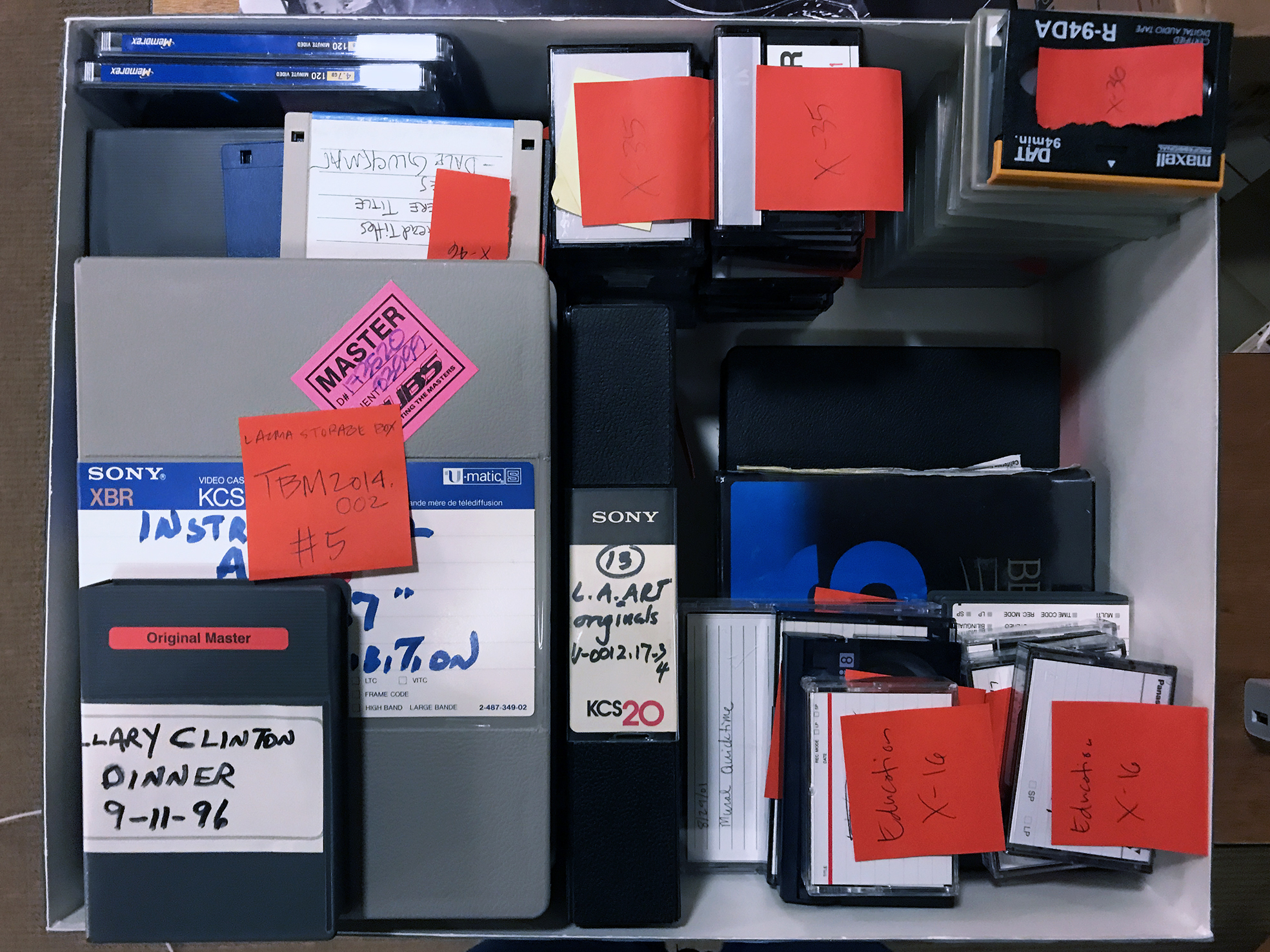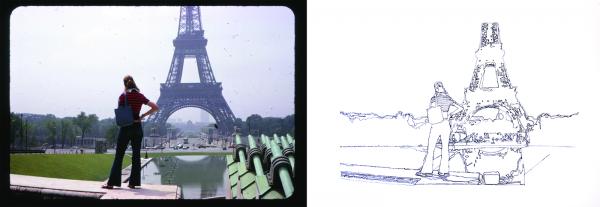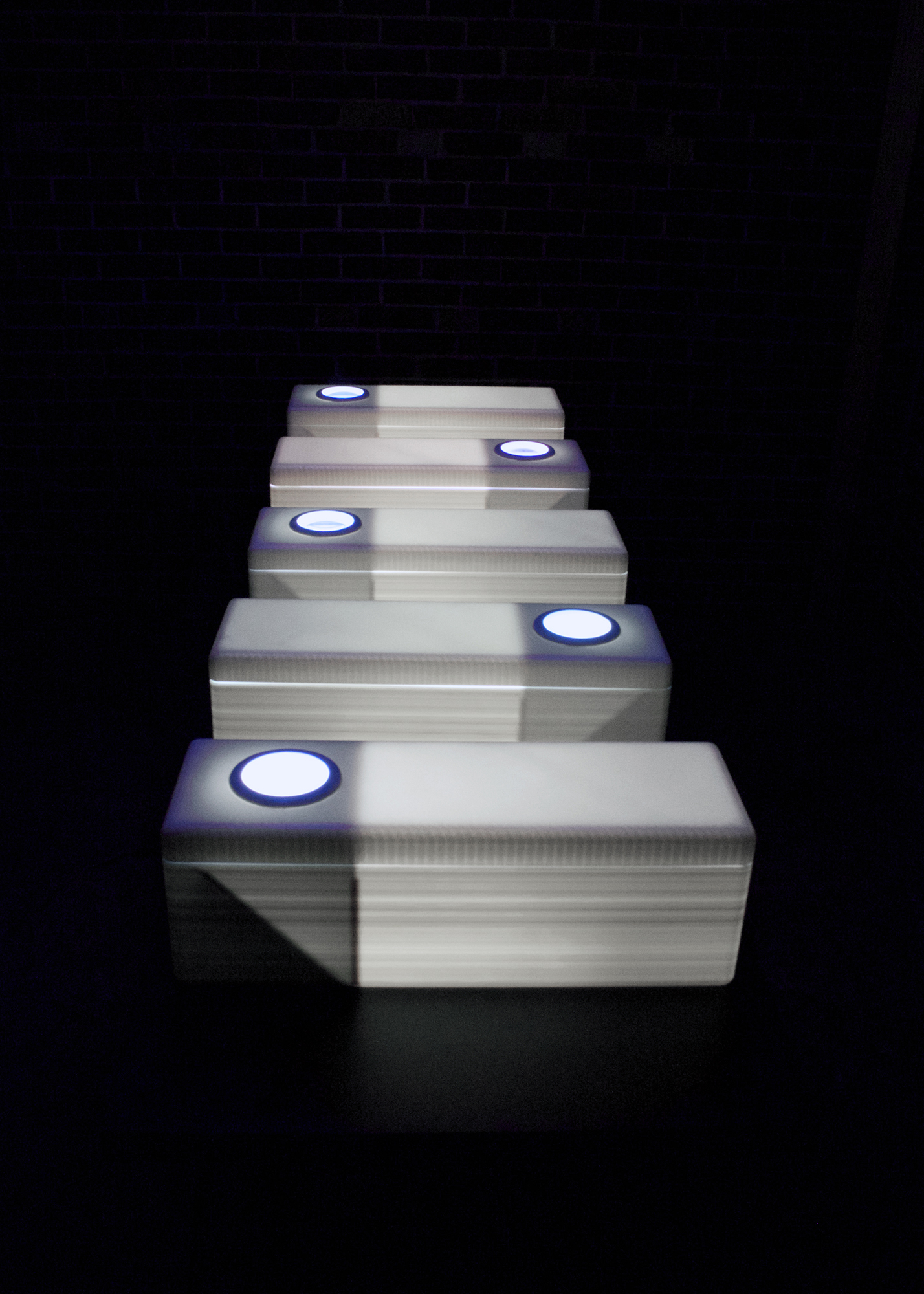Later this fall, Art + Technology Lab grant recipient Julia Christensen will be in Los Angeles to work on her project Upgrade Available. She'll be participating in a special meeting at Jet Propulsion Laboratory to envision an artwork for a long-term interstellar space mission and will also be "in residence" at LACMA, where she will discuss her ideas with scientists, engineers, designers, artists, and curators. I chatted with Julia to learn more about her project.
Tell us about Upgrade Available.
Upgrade Available is an ongoing research and art project that began during a trip to India in 2012. A wild string of events led me to an “e-waste” processing center outside of Chennai, where I witnessed a 40-ton mountain of trashed computers, hard drives, televisions, and cell phones. This experience compelled me to investigate our complex relationships with the electronics that we consume and discard. I’ve found that we encode our electronics with our memory, our identity, and our legacy, creating very complicated trash.
My research led to the planned obsolescence that is designed into our electronics, which sets us up to buy new versions upon release. I use the phrase “upgrade culture” to describe the perceived need to continually upgrade electronics and recordable media in order to remain relevant. Over the past five years I’ve made a series of artworks that question how upgrade culture impacts our personal lives, institutional operations, and long-term scientific research, especially space exploration.
I call the short time cycles determined by technological obsolescence “technology time.” These are the short time frames determined by each new version of hardware and software. The first component of Upgrade Available explores how “technology time” impacts our personal electronics and archives. My installation Burnouts uses friends’ discarded iPhones—which all still function!—as light sources in a series of sculptural, self-designed video projectors. I made a series of photographs, entitled Hard Copy, of obsolete media collections that people have stored in basements and attics, despite the fact that they will never access them again due to obsolescence. I also bought several 35mm slide collections of deceased people on eBay, which became the basis for my series of digital plotter drawings, We Share Our Pictures.
Hard Copy and We Share our Pictures will be on view in the LACMA Art + Tech Lab in conjunction with Technology Time, a public program I will be doing there this fall.
How is your research on "upgrade culture" reflected at the institutional level at LACMA and with your work at the Media Archaeology Lab at the University of Colorado in Boulder?
The LACMA Art + Technology grant has given me the opportunity to understand the impact of these issues at the institutional scale. In the 21st century, the long-term operations of “institutional time” are difficult to square with the short cycles of “technology time.” My work at LACMA has specifically looked into how this affects the museum archives and the buildings.

The LACMA operational archives are fascinating because most of the ephemera still exists in its original format. The result is a history stored on every imaginable media format—VHS, Beta, Zip disks, floppy disks, 8mm film, reel-to-reel audio, you name it. Within the digital realm alone, several generations of operating systems and software platforms are represented. I was permitted to take a selection of this ephemera to the Media Archaeology Lab in Boulder, which houses functioning computer technology from across the decades. I attempted to upgrade old PowerPoint files, videos, and images from this archival ephemera. My results emphasized the reasons that the archival department has probably not done much of this already—the act of upgrading requires a lot of equipment, cords, adapters, and time, with little-to-no noticeable improvement from one version to the next. It is hard for an institution to commit to such upgrades for the sake of fidelity, because presumably, it will be necessary again within another short cycle of “technology time.”
Meanwhile, museum buildings support a wide range of operations over the long term, including the exhibition of artwork, so architectural flexibility and adaptability are crucial. It is an auspicious time at LACMA, since several of these buildings are set to be replaced by a new museum building. To think about how the future LACMA site can support operations and exhibitions, I made a series of photographs of the obsolete technology embedded in the walls and ceilings of the current building site. How can buildings, as we currently conceive of them, possibly keep pace with the endless flow of upgrades that has come to exemplify contemporary technology? My photos, which will also be on view in the Lab this fall, lead to compelling questions about modular architecture and adaptable systems.
The third component of Upgrade Available deals with upgrade culture in the future and particularly deals with space travel. How did that come about and what can we look forward to seeing in the future?
The LACMA Art + Technology Lab introduced me to scientists at NASA’s Jet Propulsion Lab, where I’ve been tasked with envisioning an artwork for a proposed mission to Proxima b, an exo-planet in the Alpha Centauri system, 4.2 light years from Earth. This spacecraft will launch in the year 2069 (the 100th anniversary of the Apollo mission). By then, JPL hopes to have developed propulsion technology for this craft to travel at 1/10th of the speed of light, meaning it will take over 40 years for it to arrive at its destination. The spacecraft will need to autonomously upgrade itself to survive the environmental conditions of its decades-long journey, but it will also need to upgrade itself to remain relevant to life on Earth when it arrives at its destination in 2109. This part of the project is all about time, speculation, obsolescence, and long-term thinking. The challenge of this artwork, and indeed this spacecraft, is to move beyond our thinking in cycles of “technology time” or “institutional time” to design technology for “space time.”
In September, I will participate in an Architecture Team (A-Team) study at JPL's Innovation Foundry with experts on robotics, interstellar travel, quantum physics, and history, to develop the artwork for this spacecraft. In October, I’ll be present here in the Art + Technology Lab for a full week to discuss ideas with the public about this spacecraft. (Come talk to me!) Meanwhile, I am writing a book about all of this work, entitled Upgrade Available, which will be published by Dancing Foxes Press next year.
The Art + Technology Lab is presented by:
The Art + Technology Lab is made possible by Accenture, Snap, Inc., and DreamWorks Animation.
Additional support is provided by SpaceX and Google.
The Lab is part of The Hyundai Project: Art + Technology at LACMA, a joint initiative exploring the convergence of art and technology.
Seed funding for the development of the Art + Technology Lab was provided by the Los Angeles County Quality and Productivity Commission through the Productivity Investment Fund and LACMA Trustee David Bohnett.





